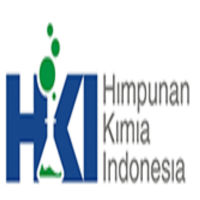ANALISIS PARAMETER AIR LIMBAH INDUSTRI PENYAMAKAN KULIT SUKAREGANG GARUT
Abstract
The leather tanning industry of Sukanggang Garut is an industry that has the potential to produce wastewater that contains a lot of organic substances. Therefore, it is necessary to conduct an effective test to determine the parameters of wastewater pollution in the leather tanning industry. The purpose of this study was to test the value of water pH, Chemical Oxygen Demand (COD), Biochemical oxygen Demand (BOD), Total Suspended Solid (TSS), and the amount of chromium concentration in the sample taken. The BOD test will be carried out using the Winkler method, the COD test will be carried out using the reflux method and the TSS test will be carried out using the gravimetric method, while the chromium concentration test will use an AAS spectrophotometer and the pH test will be carried out using a pH meter. The test results show that the liquid waste from the tanning industry activity in Sukaregang Garut exceeds the liquid waste threshold for the leather tanning industry.
Keywords
Full Text:
PDFReferences
Anonim. (2018, 21 Agustus). 600 Hektare Sawah Terindikasi Tercemar Limbah Kulit. Diakses dari https://www.garutnews.com.
Atima, W. (2015). BOD dan COD Sebagai Parameter Pencemaran Air dan Baku Mutu Air Limbah. Jurnal Biologi Sel, 4(1), 83–98.
Bacordit, A., Armengol, J., Burgh, S. V. D., & Olle, L. (2014). New challenges in chrome -free leathers: Development of wet-bright process. Journal of the American Leather Chemist Association, 109(4), 99–109.
El Hadi, R.M., & Nasution A. (2012). Prototype Simulasi Instalasi Pengolahan Air Limbah Cair Industri Penyamakan Kulit dengan Sistem Daur Ulang. Prosiding SnaPP 2012 : Sains, Teknologi, dan Kesehatan.
Irham, M., Abrar, F., & Kurnianda, V. (2017). Analisis BOD dan COD di perairan estuaria Sungai Krueng Cut, Banda Aceh. Jurnal Depik, 6(3), 199–204.
Jiyah, Sudarsono B., & Sukmono A. (2017). Studi Distribusi Total Suspended Solid (Tss) Di Perairan Pantai Kabupaten Demak Menggunakan Citra Landsat. Jurnal Geodesi Undip, 6(1), 41–47.
Muttaqien., M. R. (2018). Damoak Sentra Industri Kulit Sukaregang terhadap Kondisi Ekonomi dan Lingkungan Masyarakat Kawasan Sukaregang (Studi Kecamatan Garut Kota Kabupaten Garut). Skripsi, Universitas Brawijaya, Malang.
Suhartini, M. (2013). Kopilimerisasi Kulit Pisang-N(hidroksimetil) Akrilamida untuk Adsorben Ion Logam Cu (II) dan Cr (VI). Jurnal Riset Teknologi Pencegahan Pencemaran Industri, 2(3), 133–142.
Supriyantini E., Nuraini, R. A. T., & Fadmawati, A. P. (2017). Studi Kandungan Bahan Organik Pada Beberapa Muara Sungai Di Kawasan Ekosistem Mangrove, Di Wilayah Pesisir Pantai Utara Kota Semarang, Jawa Tengah. Buletin Oseanografi Marina, 6(1), 29–38.
Tim Penulis. (2004). Pedoman Teknis Pengelolaan Limbah Cair Industri Kecil. Jakarta: Kementerian Lingkungan Hidup dengan PT. Envirotekno Karya Mandiri.
Wardhani, E., Dirgawati, M., & Alvina, I. F. (2013). Kombinasi Proses Presipitasi dan Adsorpsi Karbon Aktif Dalam Pengolahan Air Limbah Industri Penyamakan Kulit. Jurnal Lingkungan Tropis, 7(1), 39–52.
Wulansari, N., (2016). Pengaruh Penambahan Sabut Kelapa Pada Limbah Padat Penyamakan Kulit Terhadap Efektivitas Fitoremediasi Logam Kromium (Cr). Skripsi, Universitas Pendidikan Indonesia, Bandung.
Yulis, P. A. R., Desti, & Febliza A. (2018). Analisis Kadar DO, BOD, dan COD Air Sungai Kuantan Terdampak Penambangan Emas Tanpa Izin. Jurnal Bioterdidik: Wahana Ekspreksi Ilmiah, 6(3).
Zaenab. (2018, 21 Agustus). Industri Penyamakan Kulit dan Dampaknya Terhadap Lingkungan. Diakses dari https://keslingmks.wordpress.com.
DOI: http://dx.doi.org/10.22373/lj.v10i1.11088
Refbacks
- There are currently no refbacks.
Copyright (c) 2022 Astri Senania, Novi Yanti

This work is licensed under a Creative Commons Attribution 4.0 International License.
INDEXED IN

